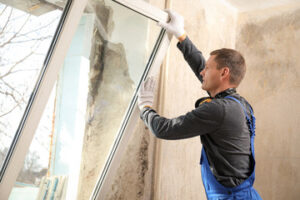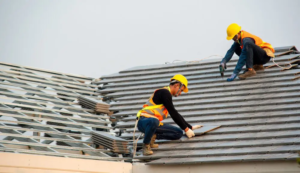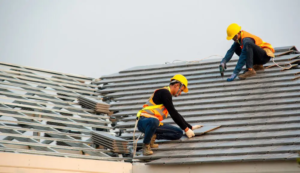Maryland Window Replacement offers homeowners a chance to improve curb appeal, lower energy costs, and enhance comfort. However, the sheer number of options can be overwhelming.

To help you choose the right windows for your home, consider these telltale signs that it’s time for a replacement. Then, learn about the various features and components that impact cost and performance.
The frame of a window does more than simply support and hold the glass panes in place. It also provides a protective seal against air and water leaks, helping to keep your home’s energy efficiency in tip-top shape. It’s important to choose a durable frame that reflects your aesthetic preferences and aligns with your sustainability goals.
Window frames come in a wide variety of materials, each with its own unique benefits and drawbacks. Wood frames, for example, offer a timeless and natural look and are an excellent insulator. However, they require regular maintenance to keep them looking and functioning their best. This is especially true in humid climates like Florida, where moisture can cause wood to deteriorate over time.
Another popular choice is fiberglass, which offers a durable and low-maintenance finish. It’s also an excellent insulator, though it doesn’t quite match the insulating performance of wood or vinyl. Fiberglass frames are more expensive than other options, but they’re well worth the investment for their high-quality performance and energy efficiency.
Metal frames, such as aluminum, are another option. They’re durable and easy to maintain, but they can be susceptible to corrosion in coastal salty environments. Aluminum is also known for its ability to withstand temperature fluctuations, which makes it a good choice for homes in hot and cold climates.
Finally, composite frames (also known as clad windows) are a hybrid of wood and other materials. They’re often a combination of aluminum, vinyl, and wood, which means they provide the durability of wood with the added insulation of other materials.
When choosing a new window frame, it’s crucial to consider the type of weather your home experiences, your preferred aesthetic, and your budget. Ultimately, the right frame can dramatically impact your home’s energy efficiency and help you live a more sustainable lifestyle.
Sash
The sash of a window is what holds the glass panes in place, giving windows their unique look and offering different levels of energy efficiency. It also contains the hardware components and accessories that allow for opening, closing and locking. Window sashes can be customized with different materials, finishes and designs depending on personal preference and the overall aesthetic of a home or building. Well-maintained window sashes add to the curb appeal of a home and contribute to its value. In addition, they provide security by preventing intruders from entering the house and protect the interiors from the elements.
While repairing the window sash is the ideal option in many situations, there are certain circumstances where replacing the window sash may be necessary. Severe damage, broken glass that cannot be repaired, or a sash that no longer fits the frame properly may necessitate replacement. It is also worth noting that window sash replacement can be an opportunity to upgrade to newer, more energy-efficient windows.
Window sashes can be made from a variety of materials, such as wood, aluminium, uPVC and composite material. The material chosen will depend on the appearance desired, maintenance requirements, durability, and energy efficiency. Wood sashes, for example, require regular maintenance such as repainting and staining to prevent rot. Moreover, they are prone to insect infestation and moisture. Aluminium and uPVC sashes, on the other hand, are more durable and do not need painting or staining.
While it is possible to replace the window sash yourself, the best course of action is to have a professional perform the installation. This is because a professional will have the specialized tools and knowledge to do the job correctly and safely. In addition, they can offer advice about the best options for your windows and answer any questions you may have.
Glass
Whether you’re upgrading the windows in your home or renovating an entire residential building, window replacement offers a great opportunity to prioritize energy efficiency. Seemingly simple decisions like what glass coatings to use and what type of glass enhances the appearance and provides the best safety features will have a long-lasting impact on the overall performance of your windows.
While clear float glass remains the world’s most common window glass, there are several other options that enhance security, increase visibility and improve energy efficiency. These options include tempered glass, laminated glass and insulated glass units with Low-E coatings.
Tempered glass improves the strength and durability of traditional annealed glass, making it less likely to shatter into dangerous sharp shards. Laminated glass has enhanced safety qualities by combining a polyvinyl butyral film between the panes of glass during manufacturing. This adds strength and tamper-proof protection, and it eliminates 99 percent of harmful UV rays. Insulated glass has added benefits by reducing heat transfer and minimizing condensation between the panes. This helps to create a comfortable indoor temperature throughout the year. Window installation professionals will typically recommend a double or triple-pane window with gas inserted between the panes (typically argon or krypton).
When considering the energy efficiency of your new window, pay attention to the U-value and solar heat gain coefficient (SHGC) ratings. A lower U-value helps to reduce heat loss during colder months, while a higher SHGC rating minimizes solar heating in the summer. This helps to regulate indoor temperature, reducing reliance on air conditioning systems and decreasing energy consumption.
Lastly, be sure to consider the orientation of your windows in relation to sunlight exposure and the desired level of natural light penetration into living spaces. Choosing a glass with a higher visible light transmittance (VLT) allows more natural sunlight to enter your living space, increasing comfort and productivity. However, it’s important to balance the needs for energy efficiency with the desire for natural lighting.
Insulation
Insulation is a crucial component of any window and door, as it helps prevent heat loss, reduce drafts, and keep your home comfortable all year round. Homeowners can apply several types of insulation to their windows, from caulking and weatherstripping to thermal curtains and window films. These DIY options can help minimize energy bills, maintain a comfortable indoor temperature, and even contribute to a healthier and more sustainable living environment.
The most common form of insulation is plastic film, which is available in kits at many home stores and can be used to cover any window or door frame. These films stretch over the window, creating an insulating effect and blocking harmful UV rays from entering the house. They can be applied easily, and they can also be removed, allowing homeowners to change the look of their windows without compromising insulation.
Before applying the plastic film, it’s essential to clean the window surface thoroughly to ensure that no dirt or dust is trapped beneath the insulation. It’s also important to dry the window, as moisture can interfere with the adhesive properties of the film. Once the window is cleaned, homeowners can use a spray bottle filled with water to wet the window surface. This helps the plastic film adhere smoothly and prevents air bubbles.
Once the plastic film is on the window, it’s important to seal the edges of the window to avoid air leakage. Some people recommend using a hairdryer or heat gun to gently warm the film and make it more pliable. Once the corners are pressed firmly against the frame, they can be secured with double-sided tape or clear adhesive.
In addition to providing a more comfortable and energy-efficient living environment, insulating your windows can also help block noise. This can be particularly beneficial in busy areas where loud sounds can cause stress, sleep disturbances, and other health problems.
With the rising concern over global warming, more and more homeowners are making an effort to insulate their homes with various DIY solutions. These include caulking and weatherstripping, thermal curtains, window films, and Low-E coatings. These measures can help reduce energy bills, create a more pleasant living environment, and increase the value of your property.

